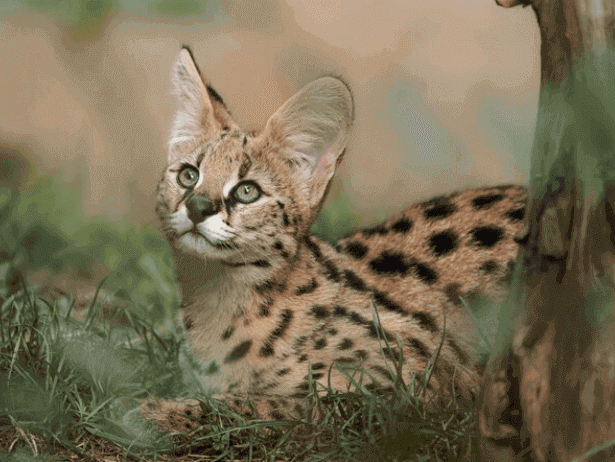
Can a serval cat kill a human?
Introduction
Serval cats are stunningly beautiful and exotic creatures native to the African continent. With their striking spotted coats and long legs, these wild cats have garnered attention and intrigue from animal enthusiasts worldwide. However, along with admiration comes curiosity, and one of the most common questions that arises is whether a serval cat can kill a human. In this article, we will explore the nature of serval cats, their behaviours, and the factors that determine whether they can be dangerous to humans.
Understanding Serval Cats
Before delving into the question of whether a serval cat can kill a human, it’s essential to understand these magnificent felines.
Serval Cat Overview
Serval cats (Leptailurus serval) are medium-sized wild cats native to Africa. They are known for their unique physical features, including:
- Spotted Coat: Serval cats have a golden-yellow coat adorned with dark, elongated spots, making them resemble miniature cheetahs.
- Long Legs: Their exceptionally long legs give them an advantage in hunting by allowing them to leap high and catch prey with ease.
- Large Ears: Serval cats have large, radar-like ears that help them detect the slightest sounds of their prey.
Natural Habitat
These graceful creatures are primarily found in the savannas, grasslands, and wetlands of Africa. They thrive in regions with abundant water sources and tall grasses, where their prey, such as rodents and birds, is plentiful.
Behavior and Diet
Serval cats are solitary and nocturnal hunters. Their diet mainly consists of small mammals, birds, and insects. With exceptional agility and sharp hunting skills, they can pounce on prey from a distance with incredible accuracy.
Can a Serval Cat Kill a Human?
Now, let’s address the burning question: can a serval cat kill a human? The short answer is that it’s highly unlikely.
Natural Behavior
Serval cats are not inherently aggressive towards humans. In the wild, they tend to avoid human contact and are more likely to flee than confront humans. They are elusive creatures that prefer to keep their distance from potential threats.
Size and Strength
While serval cats are agile and have sharp claws, their size is significantly smaller compared to other big cats like lions and tigers. An average serval cat weighs around 20-40 pounds and stands about 2 feet tall. Their physical strength is not comparable to that of larger predatory cats.
Instincts and Threat Assessment
Serval cats have evolved to hunt small to medium-sized prey, not humans. Their instinctual behavior is geared towards catching animals like rodents and birds, not attacking creatures as large and powerful as humans. When confronted with a human, their natural response is to avoid rather than engage.
Domestication and Captivity
In some regions, serval cats are kept as exotic pets. While they may still retain their wild instincts to some extent, those raised in captivity tend to be more accustomed to human presence and less prone to aggression.
Responsible Interaction
For those fortunate enough to encounter a serval cat in the wild or in captivity, it’s crucial to exercise caution and respect their space. Avoid provoking or cornering them, as this may lead to defensive behavior. Observing from a safe distance is the best way to appreciate their beauty and grace.
Conclusion
In conclusion, the question of whether a serval cat can kill a human is a complex one. While these wild cats possess natural instincts and physical traits that allow them to be efficient hunters, they are not inclined to attack humans. Serval cats are generally elusive and prefer to avoid human interaction whenever possible.
It’s essential to remember that serval cats are wild animals, and their behavior can be unpredictable. If you ever find yourself in the presence of one, it’s best to admire them from a distance and allow them to continue their lives undisturbed.
Ultimately, serval cats are a testament to the beauty and diversity of the animal kingdom, and our responsibility as humans is to appreciate and protect these magnificent creatures in their natural habitat.





